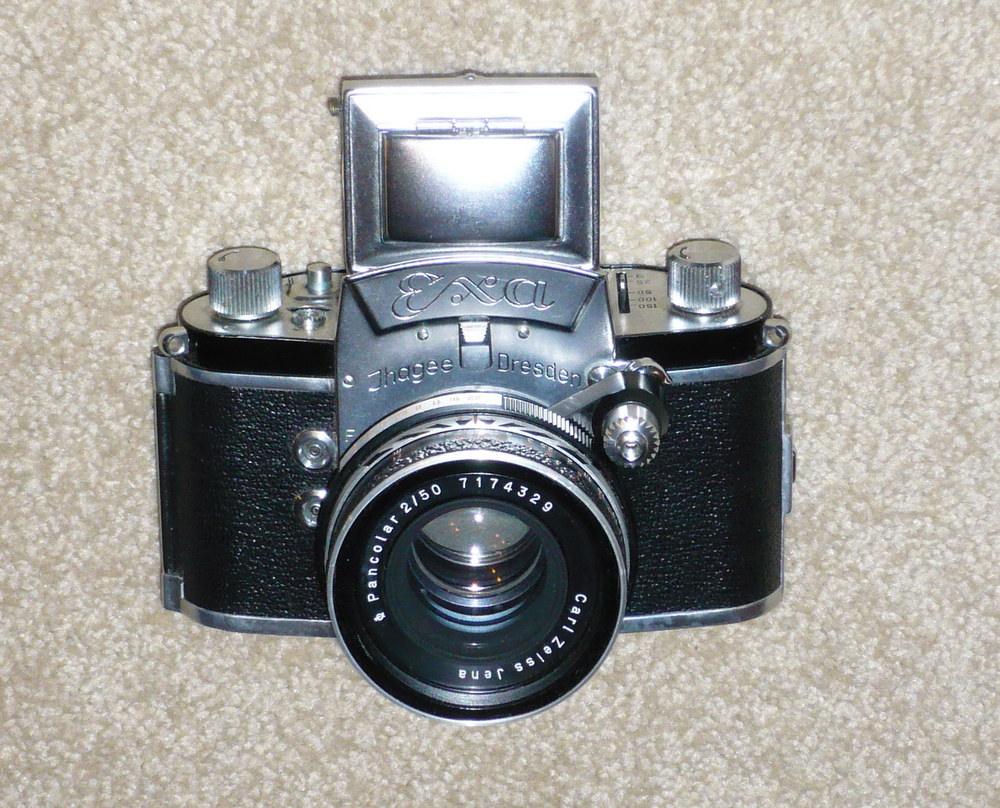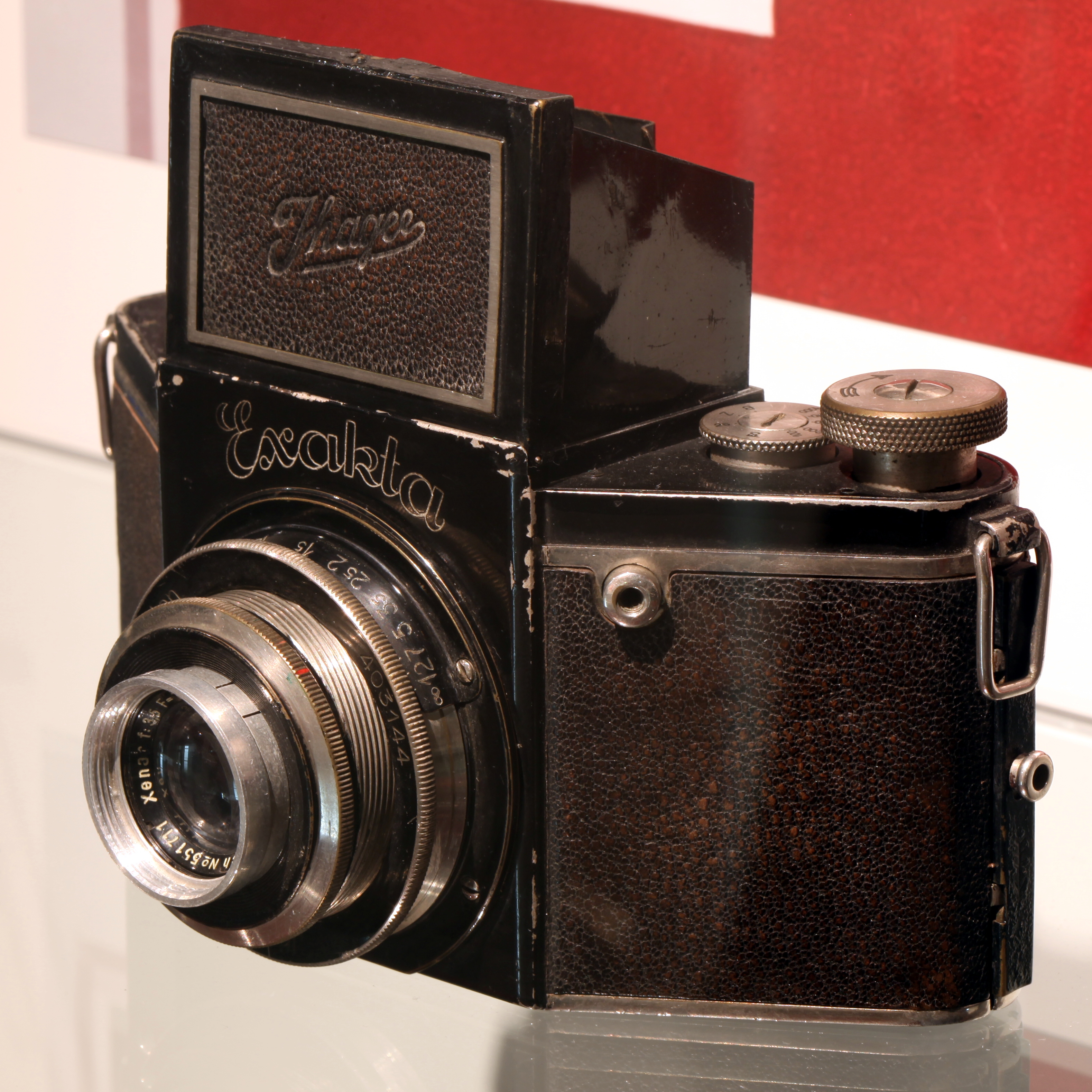|
Start (Soviet Camera)
Start () was a Soviet 35 mm format, 35 mm single-lens reflex camera produced by the Mechanical Factory of Krasnogorsk (KMZ) from 1958 through 1964. The camera was inspired by the Exakta camera. The Start used bayonet-mounted lenses and had an Exakta-style shutter release arm, a KMZ Helios (lens), Helios 44-58 mm 2 Camera lens, lens, and a cloth focal-plane shutter.McKeown, p. 389 An improved version, the Start-2, was produced ''ca.'' 1963–1964, featuring an automatic Diaphragm (optics), diaphragm and a metered prism. Notes References * {{Camera-stub Soviet cameras Cameras introduced in 1958 ... [...More Info...] [...Related Items...] OR: [Wikipedia] [Google] [Baidu] |
Mechanical Factory Of Krasnogorsk
Krasnogorsky zavod () is a Russian factory in Krasnogorsk, Moscow Oblast, Krasnogorsk near Moscow which specializes in Optics, optical technology. Part of Shvabe Holding (Rostec state corporation). During the Soviet Union, Soviet period it was called Krasnogorsk Mechanical Works (, ). The abbreviation KMZ () is still in common use. Products KMZ is known largely for its photographic and movie cameras of the Zorki, Zenit (camera), Zenit and Krasnogorsk (camera), Krasnogorsk series, several million of which were produced. It also has a large military optics and mechanical engineering division. Image:Zorki4.jpg, Zorki 4 rangefinder camera Image:Zenit12.jpg, Zenit (camera), Zenit 12 Single-lens reflex camera, SLR camera File:Kinokamera Krasnogorsk-2.jpg, Krasnogorsk-2 movie camera Image:Krasnogorsk-3_camera.jpg, Krasnogorsk-3 movie camera Image:Horizon202.jpg, Horizon (camera), Horizon 202 Panoramic photography, panoramic camera Image:%D0%A4%D0%BE%D1%82%D0%BE%D0%B0%D0%BF%D0%BF%D0 ... [...More Info...] [...Related Items...] OR: [Wikipedia] [Google] [Baidu] |
135 Film
file:135film.jpg, 135 film. The film is wide. Each image is 24×36 mm in the most common "small film" format (sometimes called "double-frame" for its relationship to the "single-frame" 35 mm movie format or full frame after the introduction of 135 sized digital sensors; confusingly, "full frame" was also used to describe the Full frame (cinematography), full gate of the movie format half the size). file:LEI0060 186 Leica I Sn.5193 1927 Originalzustand Front-2 FS-15.jpg, Leica I, 1927, the first successful camera worldwide for 35 cine film 135 film, more popularly referred to as 35 mm film or 35 mm, is a format of photographic film with a film gauge of loaded into a standardized type of magazine (also referred to as a cassette or cartridge) for use in 135 film cameras. The term 135 was introduced by Kodak in 1934 as a designation for 35 mm film specifically for still photography, perforated with Kodak Standard perforations. It quickly grew in populari ... [...More Info...] [...Related Items...] OR: [Wikipedia] [Google] [Baidu] |
Soviet
The Union of Soviet Socialist Republics. (USSR), commonly known as the Soviet Union, was a List of former transcontinental countries#Since 1700, transcontinental country that spanned much of Eurasia from 1922 until Dissolution of the Soviet Union, it dissolved in 1991. During its existence, it was the list of countries and dependencies by area, largest country by area, extending across Time in Russia, eleven time zones and sharing Geography of the Soviet Union#Borders and neighbors, borders with twelve countries, and the List of countries and dependencies by population, third-most populous country. An overall successor to the Russian Empire, it was nominally organized as a federal union of Republics of the Soviet Union, national republics, the largest and most populous of which was the Russian SFSR. In practice, Government of the Soviet Union, its government and Economy of the Soviet Union, economy were Soviet-type economic planning, highly centralized. As a one-party state go ... [...More Info...] [...Related Items...] OR: [Wikipedia] [Google] [Baidu] |
35 Mm Format
file:135film.jpg, 135 film. The film is wide. Each image is 24×36 mm in the most common "small film" format (sometimes called "double-frame" for its relationship to the "single-frame" 35 mm movie format or full frame after the introduction of 135 sized digital sensors; confusingly, "full frame" was also used to describe the Full frame (cinematography), full gate of the movie format half the size). file:LEI0060 186 Leica I Sn.5193 1927 Originalzustand Front-2 FS-15.jpg, Leica I, 1927, the first successful camera worldwide for 35 cine film 135 film, more popularly referred to as 35 mm film or 35 mm, is a format of photographic film with a film gauge of loaded into a standardized type of magazine (also referred to as a cassette or cartridge) for use in 135 film cameras. The term 135 was introduced by Kodak in 1934 as a designation for 35 mm film specifically for still photography, perforated with Kodak Standard perforations. It quickly grew in popularity ... [...More Info...] [...Related Items...] OR: [Wikipedia] [Google] [Baidu] |
Single-lens Reflex
In photography, a single-lens reflex camera (SLR) is a type of camera that uses a mirror and prism system to allow photographers to view through the lens and see exactly what will be captured. SLRs became the dominant design for professional and consumer-level cameras throughout the late 20th century, offering interchangeable lenses, through-the-lens (TTL) metering, and precise framing. Originating in the 1930s and popularized in the 1960s and 70s, SLR technology played a crucial role in the evolution of modern photography. Although digital single-lens reflex (DSLR) cameras succeeded film-based models, the rise of mirrorless cameras in the 2010s has led to a decline in SLR use and production. With twin lens reflex and rangefinder cameras, the viewed image could be significantly different from the final image. When the shutter button is pressed on most SLRs, the mirror flips out of the light path and allows light to pass through to the light receptor and the image to be capture ... [...More Info...] [...Related Items...] OR: [Wikipedia] [Google] [Baidu] |
Exakta
The Exakta (sometimes Exacta) was a camera produced by the ''Ihagee Kamerawerk'' in Dresden, Germany, founded as the Industrie und Handels-Gesellschaft mbH, in 1912. The inspiration and design of both the VP Exakta and the Kine Exakta are the work of the Ihagee engineer Karl Nüchterlein (see Richard Hummel's Spiegelreflexkameras aus Dresden), who did not survive the Second World War. An Exakta VX was used by James Stewart's character, a professional photographer, to spy on his possibly murderous neighbor in Alfred Hitchcock's ''Rear Window''. Characteristics Highlights of Exakta cameras include: * First single-lens reflex camera (SLR) for 127 film, 127 roll film (VP Exakta) came in 1933 * First wind-on lever in 1934 * First built-in flash (photo), flash socket, activated by the shutter (photography), shutter, in 1935 * First popular SLR for 135 film, 35mm film came in 1936, the Kine Exakta Early Kine Exaktas had a fixed waist-level viewfinder, but later models, starting with ... [...More Info...] [...Related Items...] OR: [Wikipedia] [Google] [Baidu] |
Helios (lens)
In ancient Greek religion and Greek mythology, mythology, Helios (; ; Homeric Greek: ) is the god who personification, personifies the Sun. His name is also Latinized as Helius, and he is often given the epithets Hyperion ("the one above") and Phaethon ("the shining"). Helios is often depicted in art with a radiant crown and driving a horse-drawn chariot through the sky. He was a guardian of oaths and also the god of sight. Though Helios was a relatively minor deity in Classical Greece, his worship grew more prominent in late antiquity thanks to his identification with several major solar divinities of the Roman period, particularly Apollo and Sol (Roman mythology), Sol. The Roman Emperor Julian (emperor), Julian made Helios the central divinity of his short-lived revival of Religion in ancient Rome, traditional Roman religious practices in the 4th century AD. Helios figures prominently in several works of Greek mythology, poetry, and literature, in which he is often described ... [...More Info...] [...Related Items...] OR: [Wikipedia] [Google] [Baidu] |
Camera Lens
A camera lens, photographic lens or photographic objective is an optical lens (optics), lens or assembly of lenses (compound lens) used in conjunction with a camera body and mechanism to Imaging, make images of objects either on photographic film or on other media capable of storing an image Photosensitivity, chemically or Image sensor, electronically. There is no major difference in principle between a lens used for a still camera, a video camera, a telescope, a microscope, or other apparatus, but the details of design and construction are different. A lens might be permanently fixed to a camera, or it might be interchangeable lens camera, interchangeable with lenses of different focal lengths, apertures, and other properties. While in principle a simple lens, simple convex lens will suffice, in practice a compound lens made up of a number of optical lens elements is required to correct (as much as possible) the many optical aberrations that arise. Some aberrations will be prese ... [...More Info...] [...Related Items...] OR: [Wikipedia] [Google] [Baidu] |
Diaphragm (optics)
In optics, a diaphragm is a thin opaque structure with an opening ( aperture) at its center. The role of the diaphragm is to ''stop'' the passage of light, except for the light passing through the ''aperture''. Thus it is also called a stop (an aperture stop, if it limits the brightness of light reaching the focal plane, or a field stop or flare stop for other uses of diaphragms in lenses). The diaphragm is placed in the light path of a lens or objective, and the size of the aperture regulates the amount of light that passes through the lens. The centre of the diaphragm's aperture coincides with the optical axis of the lens system. Most modern cameras use a type of adjustable diaphragm known as an iris diaphragm, and often referred to simply as an iris. See the articles on aperture and f-number for the photographic effect and system of quantification of varying the opening in the diaphragm. Iris diaphragms versus other types A natural optical system that has a diaphra ... [...More Info...] [...Related Items...] OR: [Wikipedia] [Google] [Baidu] |
Soviet Cameras
The Union of Soviet Socialist Republics. (USSR), commonly known as the Soviet Union, was a transcontinental country that spanned much of Eurasia from 1922 until it dissolved in 1991. During its existence, it was the largest country by area, extending across eleven time zones and sharing borders with twelve countries, and the third-most populous country. An overall successor to the Russian Empire, it was nominally organized as a federal union of national republics, the largest and most populous of which was the Russian SFSR. In practice, its government and economy were highly centralized. As a one-party state governed by the Communist Party of the Soviet Union (CPSU), it was a flagship communist state. Its capital and largest city was Moscow. The Soviet Union's roots lay in the October Revolution of 1917. The new government, led by Vladimir Lenin, established the Russian SFSR, the world's first constitutionally communist state. The revolution was not accepted by all wi ... [...More Info...] [...Related Items...] OR: [Wikipedia] [Google] [Baidu] |





